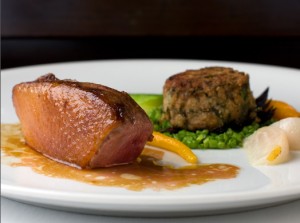 I can't remember the last time I wrote a restaurant review. I do have a list of places on my 'to talk about' list, though; some of these spots are more remote or 'hole in the wall' than others and I selfishly find I like to keep these hidden gems to myself before I dig deep to overcome my personal/professional block and write about them. The good news for you, dear reader, is that when I do finally 'break down' and share my impressions of certain fine establishments around town, you know my writings are heartfelt.
I can't remember the last time I wrote a restaurant review. I do have a list of places on my 'to talk about' list, though; some of these spots are more remote or 'hole in the wall' than others and I selfishly find I like to keep these hidden gems to myself before I dig deep to overcome my personal/professional block and write about them. The good news for you, dear reader, is that when I do finally 'break down' and share my impressions of certain fine establishments around town, you know my writings are heartfelt.
Time and again my experiences at the somewhat off-the-beaten path TW Food restaurant in Cambridge are exceptional ones - so much so that it was the "Something New" gift card I imparted on two of my best friends earlier this fall as part 2 of their wedding present (part 1 being "Something Old" - a gift card to the spot where they had their first official date). The recent special tasting of Jura wines with food pairings by the ever-meticulous head Chef/Owner Tim Wiechmann that I attended was no exception. A small, talented team (maybe just Tim, his attentive wife Bronwyn and their knowledgeable Sommelier Jillian Marini?) in a small, cozy/romantic space seems to be all you need to create an unusually thoughtful, unobtrusive experience for guests. An artisanal approach doesn't hurt either...
Jillian's personal wine curiosity means that TW doesn't just deliver an amazing gastronomic experience, but that you are in for a treat when you also opt for the wine pairing as part of their prefix menu. I don't think there is a more reasonably priced meal around town - let alone one that will allow you, already an 'explorer' by virtue of the fact that you sought out TW Food in it's Cambridge nook, to further discover several distinct parts of the wine world and delicious flavor combinations at one sitting.
TW is also committed to the local/seasonal movement. This means that their wine list, though small, packs a real punch and is always fine-tuned to work with the fare of the season. Right now they are rock'n a largely Jura wine selection. The Jura is a tiny, lesser explored wine region bordering Burgundy and Switzerland. Wines from these regions share a certain similarity with one another - but as I always find is the case in these parts, they have their own chutzpah and personality, too. In the Jura their focus is on lesser known varietals like Poulsard and Trousseau (reds), and Savagnin and Chardonnay (whites). It can get beastly cold there, so yes, it is right to guess the reds tend to have a levity or lighter-bodied quality to them. Minerality (terroir) cuts through and distinguishes the wines in a such a distinct way that I can only analogize to say, it reminds me of a chilly winter day when it smells like snow is coming - you just know it to be what it is.
During dinner we enjoyed Peggy Buronfosse's Cremant Rose of Pinot Noir Brut (a lively, delicious, finely bubbled sparkler with raspberry and blueberry intonations) as well as her 2006 Savagnin/Chardonnay blend called "Les Belemnites, which reminded me of an aged Chablis for its richness, truffle tones and caramel nuttiness you can get from an aged wine. Stephane Tissot's old vine Poulsard (2007) reminded me of a Gamay/Pinot Noir blend - and was a fine match for the seared tuna at hand. Dessert need not have come for the tremendous Vin Jaune by Jacques Puffeney (1999) was treat enough for me; Vin Jaune is considered a specialty of the Jura and one not to miss when the occasion presents itself.
At last check, each of these wines is available right now at TW Food. They are certainly ones I consider "nerd wines" - perfect for the wine curious explorer. And 'tis the season for giving and indulging! Head over to TW Food and you won't be disappointed.
Have you had the pleasure of dining at TW Food? What is it that keeps you going back?


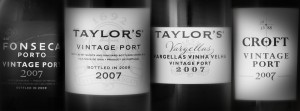
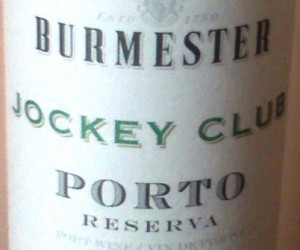
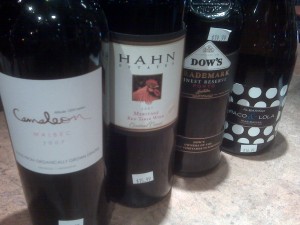 December is one of my favorite months for enjoying wine. Festivities abound and the cold and snow are still welcome friends. It’s also a time to wax nostalgic as we think about all that’s transpired over the last 12 months – and anticipate a new chapter soon to come. There are ample wines for gussying up and heading out the door in your “Sunday best” to enjoy the company of good friends and family. And there are wines for snuggling up by the fire because it’s just so tempting to stay in! Pop over to
December is one of my favorite months for enjoying wine. Festivities abound and the cold and snow are still welcome friends. It’s also a time to wax nostalgic as we think about all that’s transpired over the last 12 months – and anticipate a new chapter soon to come. There are ample wines for gussying up and heading out the door in your “Sunday best” to enjoy the company of good friends and family. And there are wines for snuggling up by the fire because it’s just so tempting to stay in! Pop over to  I heart Port. I have said this many times. So imagine my horror when one of the best in the Port winemaking business tells me they have done research.... and have found Americans are drinking Vintage Port younger and younger.
Five minutes later I was tasting the Burmester Vintage Port 2007. That's somewhat normal in the trade, because that's how we grow in our wine knowledge - knowing through a quick taste where Port starts, and, most importantly, gaining appreciation for where it goes. Trust me when I tell you the 2007 is some YOUNG stuff. The 2005 isn't much better. Both are bitingly acidic, tannic and, well, as someone recently described too-young-stuff (who I really respect), I wanted to pull my gums out over my teeth. Yes, you may have guessed, that is NOT cool.
I heart Port. I have said this many times. So imagine my horror when one of the best in the Port winemaking business tells me they have done research.... and have found Americans are drinking Vintage Port younger and younger.
Five minutes later I was tasting the Burmester Vintage Port 2007. That's somewhat normal in the trade, because that's how we grow in our wine knowledge - knowing through a quick taste where Port starts, and, most importantly, gaining appreciation for where it goes. Trust me when I tell you the 2007 is some YOUNG stuff. The 2005 isn't much better. Both are bitingly acidic, tannic and, well, as someone recently described too-young-stuff (who I really respect), I wanted to pull my gums out over my teeth. Yes, you may have guessed, that is NOT cool.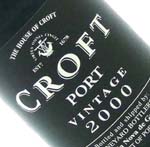 Yeah, yeah, it may be sort of, kind of getting warmer out there here in New England. But it is still rainy, damp, brisk and windy, too. It is way too early to forget about the wonderful world of Port! This week, in fact, just in case dreams of dry rose, picnics with bubbly, or vibrant whites are on the brain, the folks in Portugal are bringing us back to reality.
For the
Yeah, yeah, it may be sort of, kind of getting warmer out there here in New England. But it is still rainy, damp, brisk and windy, too. It is way too early to forget about the wonderful world of Port! This week, in fact, just in case dreams of dry rose, picnics with bubbly, or vibrant whites are on the brain, the folks in Portugal are bringing us back to reality.
For the 
 'Tis the season to be merry! And sometimes merriment is best facilitated by getting your guests in the mood for - in the immortal words of Seinfeld writers - Festivus! Last weekend I had the pleasure of pouring a few holiday libations for just such a purpose at a public tasting event. (I had what happens to be my favorite
'Tis the season to be merry! And sometimes merriment is best facilitated by getting your guests in the mood for - in the immortal words of Seinfeld writers - Festivus! Last weekend I had the pleasure of pouring a few holiday libations for just such a purpose at a public tasting event. (I had what happens to be my favorite 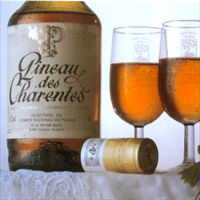 A few weeks ago I stumbled upon a rare treat in the larger wine world, particularly here in North America: Pineau des Charentes. When I saw that
A few weeks ago I stumbled upon a rare treat in the larger wine world, particularly here in North America: Pineau des Charentes. When I saw that  Last Thursday night I was not on my usual perch watching the (second) most amazing ALCS comeback in history. "Why not?", you ask, shocked this Red Sox fan was elsewhere.... I was attending an intimate wine dinner at (the new)
Last Thursday night I was not on my usual perch watching the (second) most amazing ALCS comeback in history. "Why not?", you ask, shocked this Red Sox fan was elsewhere.... I was attending an intimate wine dinner at (the new)